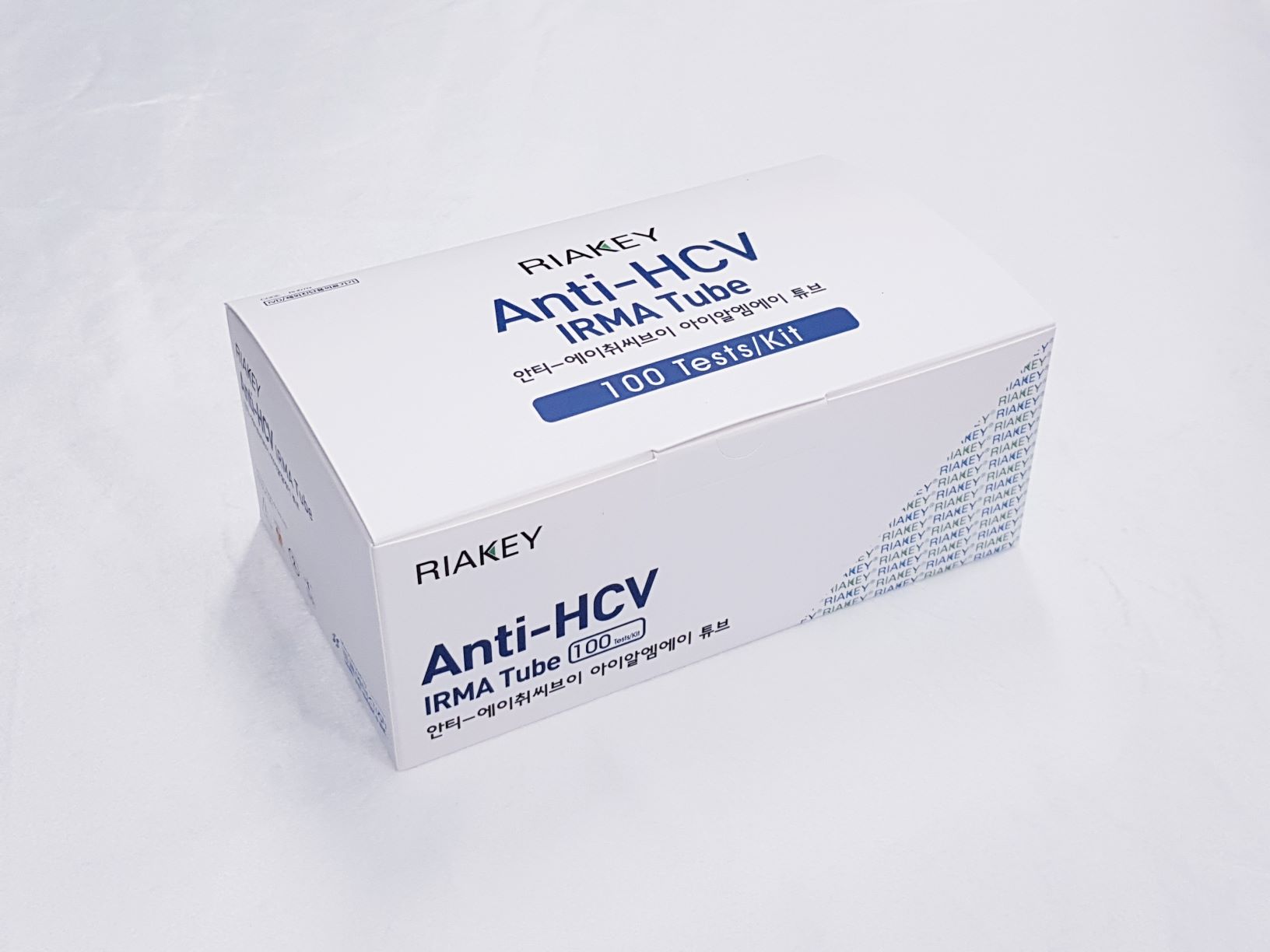Anti-HCV
Immunoradiometric assay for qualitative determination Antibody to Hepatitis C Virus (Anti-HCV) in human serum or plasma
Summary
-
KFDA Registration No
14-3047
-
CAT No
RH07N
-
TEST METHOD
IRMA
-
SAMPLE VOLUME
20 ul
-
INCUBATION TIME
30'+30'RT
-
STD RANGE
Qualitative
Download File
Intended Use
Immunoradiometric assay for qualitative determination Antibody to Hepatitis C Virus (Anti-HCV) in human serum or plasma
INTRODUCTION
Because of the absence of serological markers, blood screening test for blood-borne, non-A, non-B hepatitis were not available in the past. It was not until 1989, when Choo et al. cloned cDNA segments of the non-A, non-B hepatitis virus (designated Hepatitis C virus, HCV) from infectious chimpanzee plasma, that this became applicable. Hepatitis C is a disease caused by viral infection, which is primarily a result of blood transfusion or improper needle punctures. According to report studies prior to 1980, the risk of post-transfusion hepatitis was estimated to be 7 to 12%, with approximated 90% of post-transfusion hepatitis being caused by the NANB hepatitis agent. Other reports estimated that 5 to 10% of transfused individuals will develop acute NANB hepatitis, with 40% to 60% progressing to become chronic NANB hepatitis and carriers. Recently, the post-transfusion, NANB hepatitis agent, which also spreads through non-transfusion routes, was definitively named hepatitis C virus based on knowledges obtained with genetic engineering techniques. Since hepatitis C is a significant problem for public health management, screening for hepatitis C, therefore, is urgently needed.
PRINCIPLE OF THE ASSAY
The RIAKEY Anti-HCV IRMA is an two step non-competitive immunoradiometric (IRMA) method. The method employs one the 3rd generation recombinant HCV Antigen (Core, NS3, NS4-2 and NS5). The recombinant antigen is coated on solid phase (coated tube) and recombinant protein-A labeled with Iodine-125, is used as a tracer. Antigen-coated polystyrene tubes serve as solid phase. The tracer antigen and the coated antigen react simultaneously with the Anti-HCV present in the control.
Use Precaution
Be careful when handling all samples, reagents, or devices used in the test as they may be the source of infection.
All reagents, human body samples, etc. are handled at the designated location.
- Do not use mixed reagents from different lots.
- Do not use reagents beyond the expiration date.
- Use distilled water stored in clean container.
- Use an individual disposable tip for each sample and reagent, to prevent the possible cross-contamination among the samples.
- Store the unused coated tubes at 2~8ºC in the appropriate bags with silica gel and accurately sealed.
- If large quantity of assay would be performed at one time, there might be substantial time variation between 60 tubes at one time to minimize time variation. Also, do not exceed 10 minutes for entire pipetting.
- Wear disposable globes while handling the kit reagents and wash hands thoroughly afterwards.
- Do not pipette by mouth.
- Do not smoke, eat or drink in areas where specimens or kit reagents are handle.
- Handle samples, reagents and loboratory equipments used for assy with extreme care, as they may potentially contain infectious agents.
- When samples or reagents happen to be split, wash carefully with a 3% sodium hypochlorite solution.
- Dispose of this cleaning liquid and also such used washing cloth or tissue paper with care, as they may also contain infectious agents.
- Avoid microbial contamination when the reagent vial be eventually opend or the contents be handled.
- Use only for IN VITRO.

